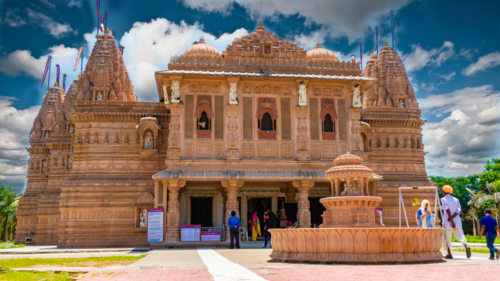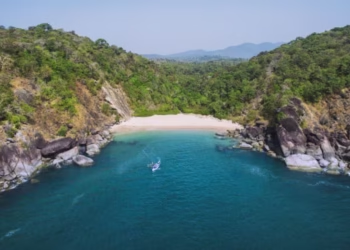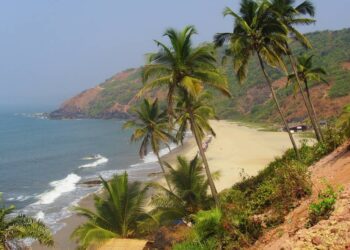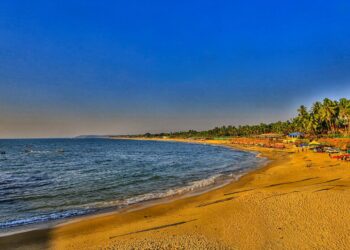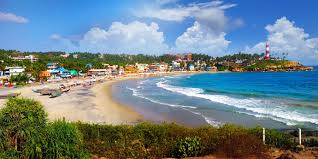Placed in the coastal village of Bhadreshwar in Kutch, Gujarat, the Bhadreshwar Jain Temple is a holy abode of Lord Parshvanath, the 23rd Jain Tirthankara. Though built in the 13th century, by the Jain Sangh, this temple, with its white marble and carved pillars, is believed to be one of the oldest Jain temples in India due to its history going back to 516BCE. If you’re planning to visit this sacred spot, here’s a plain guide about its story, what it’s like, its prayers, and how to get there.
Fun Fact: The temple’s underground shrine, Vasai Jain Temple, holds ancient idols saved from floods and raids.
Mythological Importance
Bhadreshwar Jain Temple has old Jain tales. One story says Lord Parshvanath, born ages back, left his riches to find truth and became a Tirthankara, guiding souls to freedom. Another tale tells of a merchant praying here for safe sea trade, and his ships returned full after vowing to rebuild the temple. Locals think prayers here bring safety and calm. As a key Jain shrine, it’s tied to the path of non-violence and purity taught by Tirthankaras.
Historical Overview
The temple’s roots may go to the 13th century, built by the Jain Sangh, though some say it’s older. According to Bantvijaya Chronicles, a 19th-century Jain scripture composed by Acharya Bantvijaya, the temples date back to 516 BCE (Vira Nirvana Samvat 12) during the reign of Raja Siddhasen. The idol of Parshvanatha was installed by Shri Kapil Kevali Muni in the 5th century BCE. The temple was also renovated by King Samprati, of the Maurya dynasty, and installed stone idols elephant outside temple. The temple was later renovated by Vanaraja Chavda, Sarangadeva, Virasena and Harisen. Kutch was a trade hub, and Jains thrived there. A stone from 1453 marks repairs by Devchandji. Raiders hurt it in the 16th century, but Jain traders fixed it. An earthquake in 1819 damaged it, yet it stood. By the 1900s, it was a big Jain site. After 1947, the Shri Bhadreshwar Jain Tirth Trust took over. Fixes in the 1970s kept its old look. Jain monks long ago spread its name through talks. Today, many come to Kutch’s holy shore. The temple’s past is deep. Old Jain texts from the 1400s mention its glory. British notes from the 1800s call it fine. Ruins near Bhadreshwar show a Jain town from long ago.
Architecture of Bhadreshwar Jain Temple
Bhadreshwar Jain Temple is built in Sekhari school of architecture. The temple sits on 5 acres near the Arabian Sea, built in Jain-style architecture. The main shrine, from the 13th century, has a low spire with carvings of Parshvanath with a snake hood, lotus blooms, and Jain signs, all in white marble. The sanctum holds a 2-foot marble idol of Parshvanath, seated in meditation, lit by soft lamps. The sanctum’s walls have marble slabs with Jain prayers. Built in the line of Dilwara Temples, the temple complex has 53 shrines, a major central temple and 52 minor shrines around it, one of which reputedly holds the original Parshwanath idol from 500 BC.
The temple has a sabha mandapa with 20 pillars, carved with elephants and gods. Smaller shrines for Mahavir, Shantinath, and Adinath are in the yard, made of marble. The Mahavir shrine shows him preaching, for truth. The Shantinath shrine, from 1450, has him seated, for peace. The Adinath shrine depicts him standing, for purity. The grounds, with stone floors, feel holy, near the sea. An underground shrine, Vasai Jain Temple, holds 8th-century idols. A water tank for rituals has plain steps. Pillars tell Parshvanath’s tales, guiding devotees. The sea breeze adds calm.
Rituals and Festivals
The temple stirs with festivals. Paryushan, in August or September, is grand, with eight days of fasting and prayers. Mahavir Jayanti, in April, marks Mahavir’s birth with a march. Diwali, in October or November, honors Mahavir’s nirvana with lamps. Kartik Purnima, in November, brings pilgrim walks. Samvatsari, in Paryushan, is for seeking pardon.
Information for Travelers
Hours and Entry: Open daily, 6:00 AM to 7:00 PM. Entry is free, but pujas cost ₹100-300. No photos in the sanctum.
Clothing: Wear clothes that cover shoulders and knees. Women for rituals wear sarees or suits, men wear kurtas.
How to Get There:
Air: Bhuj Airport, 65 km away, is nearest. Taxis take 1.5 hours, costing ₹1500-2000.
Train: Bhuj Station, 65 km away, links to Ahmedabad (7 hours). Autos cost ₹500-700.
Road: Buses from Bhuj (1.5 hours) reach Bhadreshwar. Taxis cost ₹1000-1500. The coastal road is scenic.
Places to Stay: Bhadreshwar has guesthouses like Hotel Sea View (₹800-1500). Bhuj has hotels like Regenta Resort (₹2000-3000). Stalls sell khaman, dabeli, and tea.
Best Time to Visit: October to March is cool, 20-30°C. Weekdays are calm. Paryushan is busy, so book early.
Nearby Attractions:
Dattatreya Temple, 25 km away, is a hill shrine.
Shyamji Krishna Varma Memorial, 30 km away, honors a freedom fighter.
Great Rann of Kutch, 80 km away, is a salt desert.
Chhari Dhand Bird Sanctuary, 40 km away, has birds.
Mandvi Beach, 60 km away, is a coastal spot.
Final Thoughts
Bhadreshwar Jain Temple in Kutch, Gujarat, a holy place in western India, is a treasure for the heart. Lord Parshvanath’s pure touch reaches all who come, making it a spot you must see among India’s sacred places.
